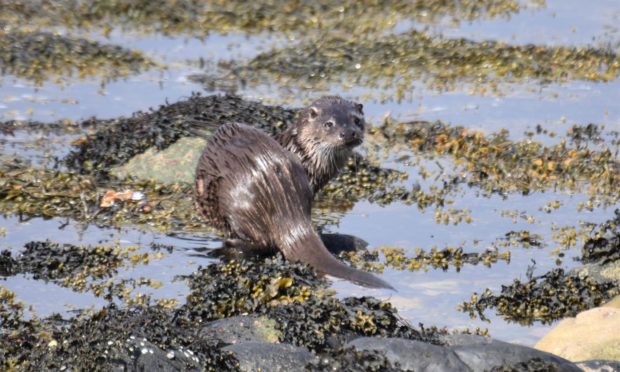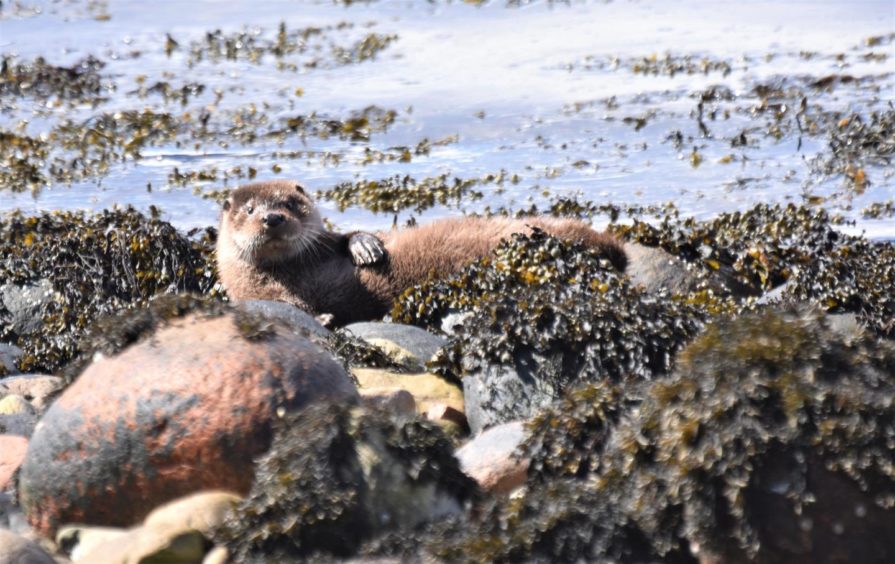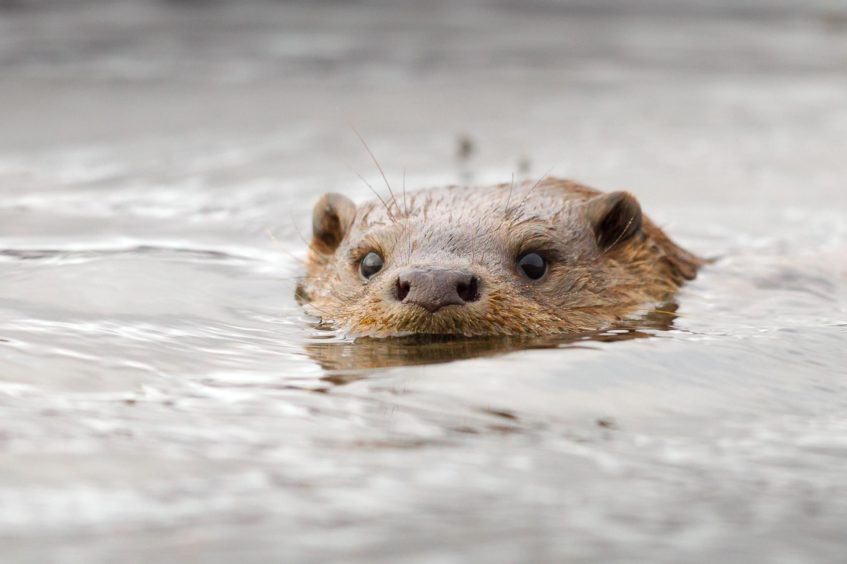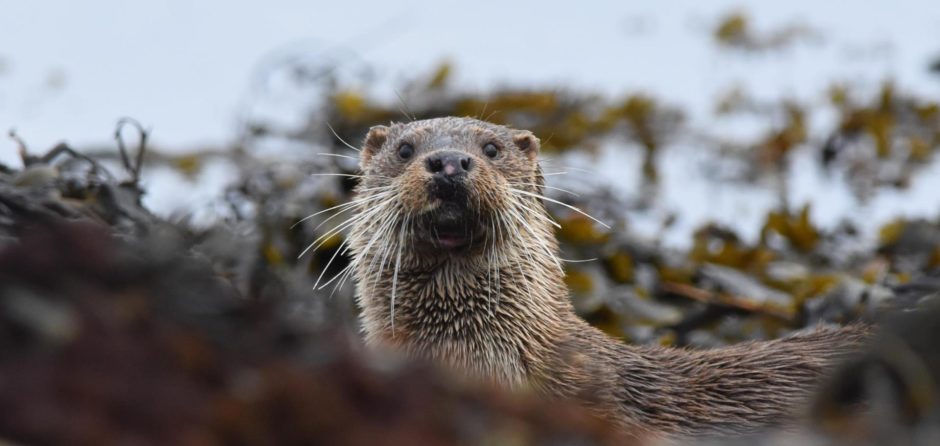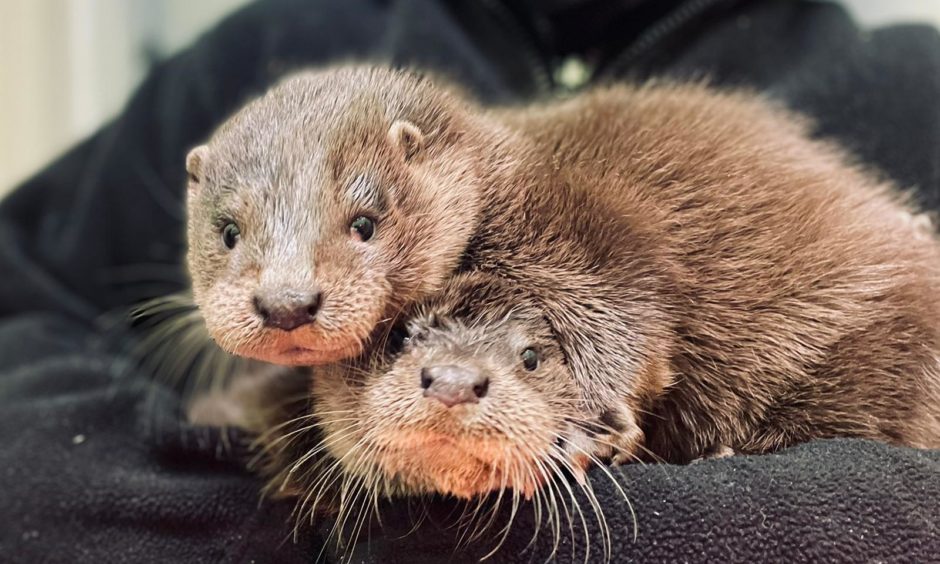Sometimes when nature watching, the truly special happens.
Last week, when walking the shore of Loch Linnhe by Appin, two dark objects out on the water caught my eye, most probably a pair of seabirds.
I brought them under the focus of my binoculars. One of the creatures dived under, revealing a distinctive sharp tail that momentarily pointed skywards – otters!
This pair were disappearing around a distant headland, so more out of hope than expectation, I trotted along the shore towards it.
On arrival, and about 200 metres out from the shore, I picked the otters up once more.
Both dived under, and quickly resurfaced in a sparkling swirl of water.
One had caught a flounder, and now both were powering through the sea like little torpedoes right towards me to land their catch.
They bounded onto the rocky shore edge only a short distance away and I could not believe my luck.
As they fed hungrily upon the flatfish, I crept closer still, until the gleam of their eyes and water-ruffled coats glinted under the warm sunshine.
As this pair were sharing the fish, it seemed most likely this was a mother and her well-matured cub.
It is the norm for cubs to remain with their mothers for up to year, providing the opportunity to hone their fish-catching skills.
After devouring the fish, the otters rested for a while in a shallow depression among the rocks, where they basked in the sunshine, the mother rolling on her side in lazy contentment.
Then, the animals were away once more, but rather than fishing the deeper water as before, they worked the watery shallows, undulating through the bladder wrack and other seaweeds.
This shallow-water, beachcombing type hunting technique was productive, and on several occasions, one or other of the otters, veered back to the shore to devour their catch, which mostly comprised of elongated, eel-like fish called rocklings and butterfish.
The otters were ambushing the fish by surprise, using their large whiskers as sensory touch receptors for finding their quarry in among the thick tangle of seaweed.
The mother and cub otter then went their separate ways, more by accident than design, the youngster returning the way it had come, the mother continuing further along the shore.
The cub soon realised it was on its own, and began to call, a sharp, piercing whistle.
This was an anxious plea; ‘where are you mother, where have you gone?’ There was no reply, and I too had lost sight of her.
Suddenly, I felt like an intruder in their own private world, and tears welled in my eyes from the sheer emotion of this close otter encounter.
Now was the time to go, to leave these wonderful animals in peace. As I turned on my heels, the young otter whistled once more, its haunting cry drifting across the wild shore of Loch Linnhe.
INFO
Coastal otters eat a wide variety of fish, including butterfish and lumpsuckers. They will also take crabs, sea urchins and octopus.
